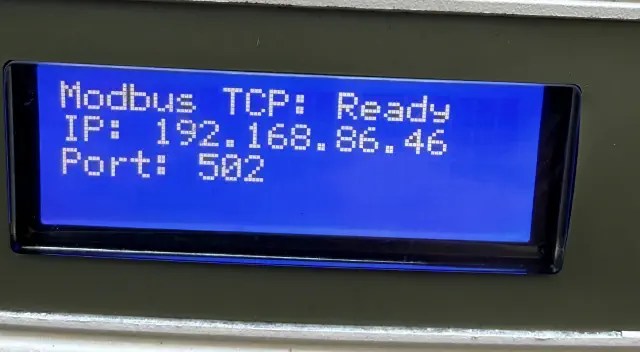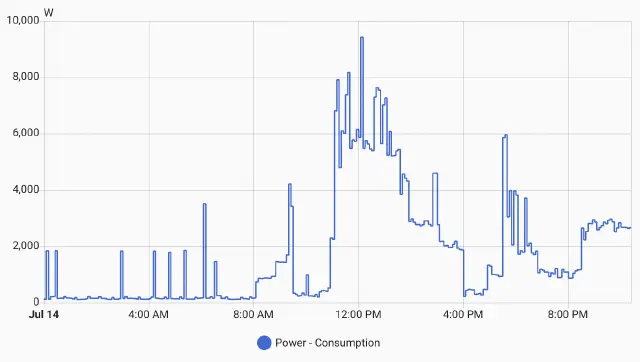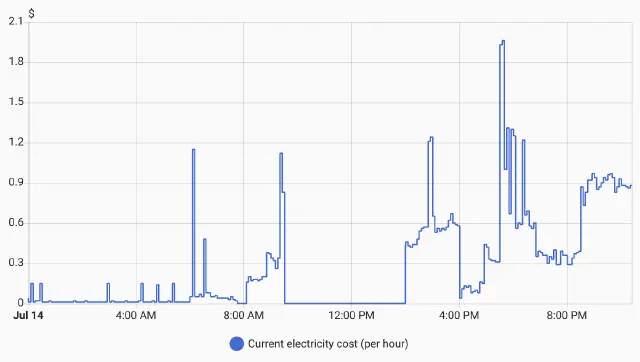Home Assistant, solar electricity, and OVO Energy

A few years ago, I bought a little Home Assistant Green box, which sits and monitors things in the house. I’ve conspicuously failed to get it to connect to my proprietary Google cameras, but it’s been good to connect to my solar system and to the power consumption monitor that’s also in it.
The most obvious thing to do there is to use the standard SolarEdge integration, for which you need an API key. The way that then works is that a) your solar system sends information every fifteen minutes to SolarEdge directly; and b) your Home Assistant will go and get that information from SolarEdge’s servers every fifteen minutes or so.
This means the data in your HomeAssistant a) only contains data polled every fifteen minutes; b) is at least fifteen minutes behind what your system is actually doing; c) is using (not much) internet bandwidth connecting to all this. Is there a better way? Yes, there is. It’s the SolarEdge Modbus Multi integration, which you can go and install. That then talks to your own solar inverter directly over your home network, using an internal protocol called Modbus, which you can see above. I’d tell you how to connect it all up, but this managed to be a two-day process of confusion and scratching heads, so you probably shouldn’t learn that from me.
I don’t have a battery for the house, because we use most of our energy anyway and a battery didn’t make a lot of sense. But, most recently, I realised that the electricity provider Amber wasn’t for me, and instead discovered OVO Energy’s EV plan.
OVO Energy offers free electricity between 11am and 2pm (and discounted electricity between midnight and six). Here’s a link to OVO Energy that’ll save you (and me) $120 in your first year. And this free electricity window has been interesting in terms of how it’s changed the electricity usage in this house.
Wherever possible, we’re now trying to run everything between 11am and 2pm. That includes reconfiguring the pool pump (three hours is fine during the winter); using the delayed start on the dishwasher; and using a timer for the hot water tank. 11am is a good time for us, since we work from home, and so therefore it’s a nice break from the first few hours of work to get up and do a few quick household chores.
I’ve used Home Assistant to monitor how much electricity we’re consuming, and the results look good.

Above is the energy we’re consuming. I assume that the blips overnight are the hot water tank and the fridge; then you can see us waking up (this was a public holiday, so we woke up later than normal) and putting some heating on, including the 2kW fan heater in the bathroom at one point.
Then you can see, at 11am, everything going on all at once; and at 2pm, quite the reduction in energy. I think my hot water tank is still trying to heat the water (it’s winter, and it drops to 7C overnight).
Between 4pm-9pm we’re charged something called a “demand” charge, which I don’t fully understand to be honest but we get charged an extra lump sum depending on the maximum amount of energy we used during this time. During that time, the hot water tank, which I’m guessing is 1.8kW, is off - it comes back on again at 9pm. You can see me cooking dinner at 6-ish.
And compare that to the cost, which I’ve also programmed into Home Assistant so we can see how much it’s all costing us.

Not much going on overnight (where we have a low rate of 8c, ostensibly to charge the car. You only get the 8c overnight if you can prove that you have an EV for some reason. A bit odd). Then, you can see a few peaks until 9am, when the solar has taken over and everything falls to zero - right through until 2pm, where we’re using more than the solar can provide. And then, finally, the spikes for dinner and the 9pm spike for the hot water, which continues through until about midnight. I still need to think about that one - it’s unlikely that we’d need piping hot water at 11pm, so I do wonder if I turn it off after 10.30pm again, and back on at midnight, so it gets warmed up again on the lower rate.
I’ve also programmed a light in the office, and one in the kitchen, to turn on when our cost has gone down to zero (whether that’s solar powering everything, or the free electricity period). That gives us clear feedback on turning things on and off.
We’ve had “free” electricity for some time during the day, but it’s not always been obvious. Now it is, with this enforced three-hour period, it’s made quite the change to how we consume electricity.
Our consumption is still much more than I’d like it to be: on the day above in total we used 35.37kWh, but the OVO app informs me that a family of three should only be using 16.79kWh, which makes me feel quite guilty. But, we used 11kWh during the free period, so at least we’re managing it well.
Next, I suppose, I should look at our biggest energy usage: the hot water tank. I’m fairly convinced that the water is set too hot; and in any case, a heat pump might make more sense. The best thing to do would be to get some insulation into the walls and ceiling - there is none. But that sounds hard and messy…